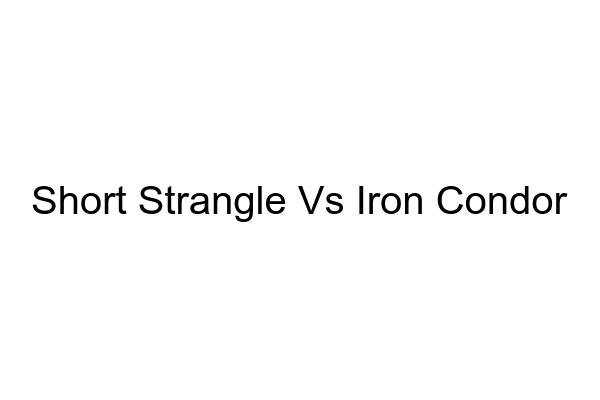Short Strangle vs Iron Condor: A Comparison Guide
Options trading can be a great way to generate income, hedge a position, or manage risk. For truly experienced traders, advanced strategies like a short strangle or an iron condor can provide even more potential rewards. In this article, we cover the basics of each strategy and provide a comparison guide to help you decide which strategy is right for you.
What is a Short Strangle?
A short strangle is a trade strategy involving both a call option and a put option on the same underlying asset. It involves selling a call located above the current market price and a put located below the current market price.
The goal is to generate a credit or income when the underlying asset stays in the same price range bound by the two options. Profit is maximized if the underlying asset stays between the two prices, but the short strangle position has unlimited risks.
What is an Iron Condor?
An Iron Condor is also a trade strategy involving both a call option and a put option but besides this is different from a short strangle.
With an Iron Condor, the call and put are both sold roughly at-the-money. It consists of two short-options, the short call and short put, along with two long-options, the long call and the long put. It means that the Iron Condor maximum profit is made when the underlying asset stays between the two short-options prices, but the downside is limited because of the two long-options protecting the position.
Comparison Guide: Short Strangle vs Iron Condor
Maximum Profit: The maximum profit potential is greater with a short strangle than with an Iron Condor. However, the maximum profit is limited with an Iron Condor because of the two long-options in the position.
Risk/Reward: The risk/reward ratio is greater with a short strangle than with an Iron Condor. The downside is unlimited for a short strangle but limited for an Iron Condor. In addition, the reward is greater with a short strangle because the maximum profit potential is greater.
Transaction Cost: Transaction cost is usually less for an Iron Condor than for a short strangle because of the four-way trade, with two short and two long options. There is no transactions cost with the long options, which are already included in the short options.
Volatility: Volatility and implied volatility projections are important when considering a short strangle or iron condor as both strategies involve selling out of the money options, which are inherently more volatile. If a trader overestimates the volatility of the underlying asset, they could find themselves in a dilemma and suffer a loss instead of profiting.
MarketXLS Helps You Decide
The MarketXLS platform sets itself apart in the options trading market by providing essential tools and features to help analyze potential trades. With efficient and reliable options analysis, it can be easier to choose the right strategy for your goals.
Whether you choose a short strangle or an iron condor, MarketXLS can help you plan your strategy and capitalize on market opportunities. Get started today to experience the power of the Options Analyzer tool.
Disclaimer: This article is strictly for educational purposes and is not meant to provide financial advice.
Here are some templates that you can use to create your own models
Search for all Templates here: https://marketxls.com/templates/

